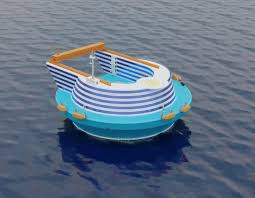
Breaking News
 Jimmy Dore Compares Trump's Endorsement of Overthrowing Libya to His Actions in Venezuela
Jimmy Dore Compares Trump's Endorsement of Overthrowing Libya to His Actions in Venezuela
 Pfizer mRNA Found in Over 88% of Human Placentas, Sperm, and Blood -- and in 50% of Unvaccinated...
Pfizer mRNA Found in Over 88% of Human Placentas, Sperm, and Blood -- and in 50% of Unvaccinated...
 "All real footage, no CGI, no AI, no video speed-up." Looks fake to me – their robot…
"All real footage, no CGI, no AI, no video speed-up." Looks fake to me – their robot…
 This Immigrant Admitted Their Plan for White PeopIe in America And It's Far Worse Than Most Thou
This Immigrant Admitted Their Plan for White PeopIe in America And It's Far Worse Than Most Thou
Top Tech News
 Build a Greenhouse HEATER that Lasts 10-15 DAYS!
Build a Greenhouse HEATER that Lasts 10-15 DAYS!
 Look at the genius idea he came up with using this tank that nobody wanted
Look at the genius idea he came up with using this tank that nobody wanted
 Latest Comet 3I Atlas Anomolies Like the Impossible 600,000 Mile Long Sunward Tail
Latest Comet 3I Atlas Anomolies Like the Impossible 600,000 Mile Long Sunward Tail
 Tesla Just Opened Its Biggest Supercharger Station Ever--And It's Powered By Solar And Batteries
Tesla Just Opened Its Biggest Supercharger Station Ever--And It's Powered By Solar And Batteries
 Your body already knows how to regrow limbs. We just haven't figured out how to turn it on yet.
Your body already knows how to regrow limbs. We just haven't figured out how to turn it on yet.
 We've wiretapped the gut-brain hotline to decode signals driving disease
We've wiretapped the gut-brain hotline to decode signals driving disease
 3D-printable concrete alternative hardens in three days, not four weeks
3D-printable concrete alternative hardens in three days, not four weeks
 Could satellite-beaming planes and airships make SpaceX's Starlink obsolete?
Could satellite-beaming planes and airships make SpaceX's Starlink obsolete?
Floating nuclear power plants to be mass produced for US coastline

Nuclear power is enjoying something of a renaissance with many countries turning to the atom to meet their energy needs. However, the bottleneck for increasing the nuclear sector isn't with manufacturing reactors. It's the civil engineering side of things, with most of the time and cost going to securing real estate for building the foundations and buildings for the plant as well as navigating a bewildering maze of permits, licenses, and planning permissions.
To get around this as well as speed up production, Core Power plans to use Generation 4 reactor design combined with conventional modular shipbuilding methods to crank out floating nuclear plants on an assembly line basis. To reflect this, the company is referring to this as the "Liberty program" in a call back to the famous Liberty ships of the Second World War that were built at a speed of as fast as four days for one hull.
The heart of these atomic Liberty ships is a compact molten salt reactor, which is an advanced version of a design first developed in the 1950s. Instead of fuel rods stuck in pressurized water as a neutron moderator and coolant, these reactors use nuclear fuel mixed with molten salt at normal atmospheric pressure.
Though it has its disadvantages, molten salt reactors have the pluses of being compact, mechanically simple, are cooled largely by passive circulation, and aren't prone to runaway nuclear meltdowns – which should make the neighbors happy. They're also easy to service because the spent fuel can be filtered out of the salt mixture and replaced with fresh fuel as a matter of course. However, Core Power claims that their reactors won't need refueling during their service life.
The clever bit is that by installing the reactors in ships, they can be easily moved to where they are needed without dealing with quite so much red tape or environmental exclusion zones and they can be moved out if demand changes or the local political climate changes for the worse. And they can be returned to a central facility for maintenance or disposal. In addition, by siting plants along coast lines, they are near areas of peak demand.
The idea of floating nuclear plants isn't new. Reactors have been installed in submarines and ships since the USS Nautilus in 1954 and the first floating power plant dates back to 1967. The idea was revived by Russia in 2019 and the Americans and British have shown increased interest in recent years.

 First totally synthetic human brain model has been realized
First totally synthetic human brain model has been realized Mach-23 potato gun to shoot satellites into space
Mach-23 potato gun to shoot satellites into space

